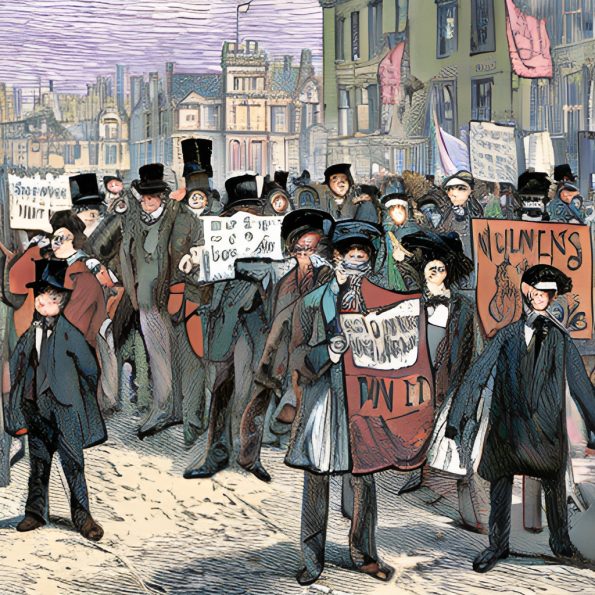(Warning: this is a long post, even by my standards.)
For several years (a decade?) now, my energy levels during the day have been pretty bad. A few years back, I decided to try to do something about it. Things still aren’t completely fixed, but they’re significantly better, and I also have a better understanding of what’s going on, so I figured it was time for a post about it.
At first, I had two hypotheses: that allergies were making me tired, and that my bad sleep was also making me tired. (I was waking up maybe four times on average over the course of the night, and not always falling right back to sleep either.) I also talked it over with my GP; she tested to see if my thyroid level was off (it turned out to be fine), and talked about sleep apnea (but I was kind of actively in denial about wanting to even think about that path, CPAP machines didn’t sound pleasant to me).
Getting my allergies under control seemed like a good idea, at any rate, so I went to see an allergist. First I tried one with the medical group that my GP is at, but I got annoyed enough by him scheduling expensive and ineffective tests and the cavalier attitude of the billing office towards those expenses. So I looked around, and found an independent allergist who was in-network.
I initially kind of slow rolled the allergy treatments; my allergist put me on new drugs, which helped, but not enough. So, a year or so later, I started also getting allergy shots; that helped more.
My sleep was pretty bad, though, and I was starting to come around to the idea that I had sleep apnea. In particular, sometimes when I wake up in the middle of the night, I was kind of jerked out of sleep; it sounded entirely plausible to me that sleep apnea would lead to that symptom. One of the things that I like about my allergist is that she really likes going deep into problems; one direction that she went in was that yes, my nose was constricted in part by allergies, but my nose’s geometry wasn’t helping things, and that could indeed lead to sleep apnea. And another direction that she discussed was environmental factors: dealing with my carpets, in particular.
I can’t remember the timing of all of this, but she eventually convinced me to have nose surgery to correct a deviated septum and reduce an internal structure inside my nose. (I think the turbinates?) Which helped some with my sleep but didn’t completely fix the problem. She also got me to vacuum my bedroom carpet weekly with a high-quality vacuum cleaner, and to improve our dust mite mitigation strategies around our bedding; that made a difference, too. (Dust mites are my main environmental allergy, I have what I think is an unusually strong recation to them.) I also noticed that, at the start of the winter, I was much more allergic overnight and when waking up, which I blamed on the heating coming on, so we’ve started getting our air ducts cleaned out once a year, which also helps. (We were already regularly cleaning our furnace filter.)
She kept on pushing me to do more with the carpets; eventually, at her urging, we replaced our bedroom carpets with hardwood floors. That actually ended up not making a noticeable difference in my allergies, I think the shots and the other mitigation strategies had made enough of a difference that that wasn’t necessary; but I really liked the look and the feel of the new floors, so I’m entirely happy to have done it even if it didn’t help with that specific issue.
As a result of all of the above, my sleep apnea is, I believe, completely gone: it’s been ages since since I’ve been startled awake. My allergies are noticeable but entirely manageable; I’m still getting allergy shots, but I’m down to doing those once every four weeks, so it’s not too bad an imposition on my life.
So that’s one victory; yay. Unfortunately, I was still quite a bit more tired during the day than I would have liked, and while my sleep was better, it still wasn’t great. And I said above that it’s been ages since I’ve been startled awake; that’s true now, but it wasn’t entirely true even after I was starting to get my sleep apnea under control, because sometimes I’d get startled awake by acid in my throat. And I’d also get woken up by having to pee (yay getting old?), by worrying (fortunately not a frequent issue these days), and sometimes for no obvious reason.
I mentioned some of this to my allergist; she thought that maybe the acid problem was related to meat digestion, and gave me some drug samples that might help. I thought that sounded plausible, but also I’d been curious about acupuncture / Traditional Chinese Medicine (a.k.a. TCM) for a while, both because that’s the sort of thing that you hear about when you spend enough time doing Tai Chi and Qi Gong and because a family member had had good experience with acupuncture. So I figured I’d try out TCM treatment next, and leave the digestion stuff as a later potential idea to try.
I went to the same TCM doctor that the aforementioned family member had gone to; his diagnosis was that I had Liver Heat and weak Kidney Qi. I also mentioned some other random problems that I had, e.g. a limited range of motion in my right big toe; he said that that was caused by tightness elsewhere in my body, related to back problems that I’d had earlier. (I thought of my back as being basically fine, it’s not causing the same sort of active problems it was a decade back, but I also wasn’t shocked that there were still some areas for improvement there.)
And wow, his diagnosis of the toe thing was definitely correct. In retrospect, I’m kind of annoyed at a foot doctor I saw a couple of decades ago who diagnosed me with Hallux Limitus and told me to wear insoles, without telling me (and I assume without realizing) that my foot problems were a symptom of a problem elsewhere in my body! I don’t know if I had a bad foot doctor or if foot doctors these days are better about that sort of connection or if Western medicine promotes a sort of specialization that misses that kind of thing; at any rate, score one for TCM there.
Anyways, my TCM doctor started off by focusing on the Liver Heat issues, via acupuncture and herbs. And my sleep got better: I fairly quickly went from waking up three or four times a night to waking up two times a night. So that was a noticeable improvement; but there was still work to do on the sleep front, both in terms of the number of times I was waking up and in terms for how long it took me to fall back asleep after waking up in the middle of the night.
For a few years now, I’ve doing something called “Nei Gong”, which translates to something like “internal work” or “internal skill”, and which is sort of Qi Gong combined with meditation and physical activities that are vaguely reminiscent of yoga. I got curious about it after reading some books by Damo Mitchell, and so I took some classes from teachers in his Lotus Nei Gong school. And a year or so after I started doing that, he opened up an online school called the Internal Arts Academy (IAA) which takes students systematically through Nei Gong processes.
One of the reasons why I bring that up here is that some of the Qi Gong sets in the IAA program talk about Liver Qi and Kidney Qi as well. (They mostly call it Wood Qi and Water Qi, but it’s the same thing.) Also, generally, after an exercise set, the program recommends a brief cooling down set of movements, designed to get energy down your body instead of stuck up in your head.
So I started experimenting with the Wood-related exercises, and the cooling down sets; and in fact some of those were very similar, which is certainly not a coincidence. I put the wood exercises into my rotation more frequently, and I did the cooling down exercises for longer, sometimes for quite a bit longer.
And towards the end of a particularly long session one day, I realized that a certain specific sort of tingling in my head had gone away. That night I slept better than normal; experimenting with this more, if I did a long enough session of those cooling down exercises then the tingling would go away and I’d fall asleep more quickly at the start of the night, wake up less, and go back to sleep less when I did wake up. Fortunately, I didn’t have to spend vast amounts of time doing those cooling down exercises: once I got that tingling under control with a few forceful sessions, then the regular cooling down exercises that he recommends were generally enough as long as I performed them thoughtfully instead of perfunctorily.
And it was also important for me not to do the wrong sorts of activities in bed or late in the evening. Reading books is fine; some kinds of puzzle games are fine but some are dangerous. Regular video games are fine during the evening (and I never played them in bed), but this was during my recent Kittens Game phase, and that game has enough open loops that I needed to stop playing it half an hour or so before going to bed, an hour or so before going to sleep; I also strictly avoided looking at it in the middle of the night when I did wake up.
With all of this, my sleep got noticeably better. I remember one night where I went to sleep, didn’t wake up until the alarm clock went off; this was honestly disconcerting, and I realized that it had been years (a decade? probably longer…) since the last time that had happened. Unfortunately sleeping through the entire night is still extremely rare for me, but these days waking up once approximately six hours into my sleep and then falling back to sleep almost immediately is decently common. (Or at least was before getting a new puppy threw a wrench in my sleep…)
One other thing happened that might (or might not) be linked to this Liver-related treatment: at one random doctor’s visit, I got weighed and my weight was 10 pounds lighter than normal, which is definitely outside of my normal variance. I didn’t actually own a scale so I didn’t have much data about that; I bought one, the measurement wasn’t a fluke, and in fact my weight kept on going down until it stabilized at 25 pounds lighter than I was.
Some of this might have been behavioral on my part: I started trying to do a better job of paying attention to signals that my body was sending as to whether or not it was hungry, and not eating as much when I wasn’t hungry. So I’m not sure how much the weight loss was caused by me behaving differently, how much it was caused by my body being less hungry than it was before, and how much was caused by some other metabolism change in my body (e.g. from the Nei Gong changes in my body); I’ll take it, at any rate, I wasn’t particularly worried about my prior weight but all things being equal my new weight is better than my old weight.
And I bring that up in part because there’s another food-related thing connected to these issues that I discovered relatively recently: my sleep is surprisingly related to my food consumption at dinner. (Or at least it was a surprise to me!) Specifically, if I either eat a large dinner or a late dinner, then I generally sleep worse, where by “large” I mean “the size my dinners used to normally be” and by “late” I mean “the time when I used to eat dinner”: now I want to have dinner on the table by 7:30, and even that is pushing it. That was completely unexpected, and makes me wonder how long I’ve been been reacting to food timing / portion sizes in this way: is it another side-effect of metabolism changes, or what?
At any rate, score one for my allergist to suggest that some of my remaining sleep issues might have something to do with food; I don’t know that this specifically was one thing that she had in mind, but she was poking at a useful area. I can’t say I’m entirely thrilled with discovering this, I like sometimes going out for a decently large dinner, but still, understanding is good and it’s not too hard to adjust to this for the significant majority of days where we eat at home. And, if I’m going to have to make food-related changes, I’m glad it was these instead of something like removing gluten. (I experimented with that for a couple of months during this, but that had no effect.)
So yay, with all of that, my sleep was actually pretty well under control. The thing was, I was still tired! Less tired than I had been, but I still wasn’t at top energy levels during the day, and sometimes I’d still feel like I needed to take a nap during the day. (Less often than before, admittedly.)
Which wasn’t a huge surprise from a TCM point of view: the sleep stuff was associated to the Liver Heat problems that my TCM doctor diagnosed me with, but there was another half to his diagnosis, deficient Kidney Qi. So my doctor switched the herbal mixture he was giving me, and I think switched some other details of the treatment that were less clear to me. In particular, he spent more time talking about my back, especially my lower back; he felt like some blockages there were causing problems, and while he’d already given me one back exercise (in addition to a neck exercise to help with the sleep problem), he gave me a couple more exercises to do every day.
My Nei Gong practice started running up against problems with my energy levels, too. For the last few years, I’ve been working part time; I’d hoped to spend a good chunk of my days off doing Nei Gong and Tai Chi, but while I did do those more, I just didn’t have the energy most days to put in the hours that I wanted. (Sometimes it manifested itself as low motivation, too, but I think that was related to energy rather than a more deep seated “I was fooling myself when I thought I would want to spend time on this” potential issue.) Often I’d flat out start to fall asleep during seated exercises; and during standing exercises, it was hard to keep going as long as I felt like I should be able to. Experimenting, it helped if I didn’t eat breakfast before doing my Nei Gong, but it didn’t help enough.
And then I went to a nine-day Nei Gong workshop, about something called the Microcosmic Orbit. Mostly that went well, actually: I certainly can imagine having more energy, there were some days where I wasn’t participating as fully as would be ideal, but also doing Nei Gong for 9 days is legitimately hard work even if you don’t have fatigue problems. So yay, that was a good sign; and I did actually manage to get my Microcosmic Orbit going on the last couple of days of the workshop.
There was one lecture during the workshop that seemed potentially relevant to me: Damo talked about how, if you hold your body in a way where you’re sinking in on yourself, then that can hurt your Spleen Qi in a way that hurts your energy levels, whereas if you actively expand your body then that will grow your Spleen Qi and energy. This is related to a concept called “bones up, flesh down” that he and other teachers had talked about in the past but that I wasn’t very good at putting into practice; fortunately, he had a different take on bones up, flesh down that I found easier to carry out. (For other Internal Arts Academy folks, that talk was recorded: it’s the Errors in Qigong video from the Maryland 2022 set.)
It actually seems decently plausible that, to some extent, Nei Gong had been hurting my energy levels, because of that mechanism? I certainly hadn’t seen evidence that Nei Gong was giving me more energy; I’m not completely convinced that it had been making my energy levels worse, but it might have been.
So I was pretty optimistic after the workshop; but I didn’t stay optimistic for long. Outside of the workshop setting, I couldn’t keep the Microcosmic Orbit going; so, while the workshop showed that it was something I was capable of doing, at my current state of training, I clearly needed to be putting in more time than I was managing in a non-workshop context. And my fatigue levels weren’t particularly better, either.
Thinking about it for a while, I decided I should take a back-to-basics approach to Nei Gong: rather than banging my head against the Orbit, I should spend time on more foundational exercises. And also I should spend time on Qi-building exercises: in particular, there were exercise sets that Damo recommended for building Kidney Qi and for building Spleen Qi, both of which seemed relevant to me. So I stopped doing new lessons in the Nei Gong course: I made just to find time to do each of those Qi-building exercises for 40 minutes twice each week and I spent the rest of my Nei Gong practice time on foundational exercises.
I liked those two exercises; I’m not 100% sure how much they helped my energy levels, but they might have, and I’m pretty sure that the Spleen Qi set helped build connections in my body that were useful for both Nei Gong and Tai Chi. (It led to me feeling a sort of stretchy, elastic feeling inside of my body.) And spending time on foundational stuff instead of pushing forward in the course definitely felt right.
I also went to a few (three?) in-person three-day Nei Gong workshops that winter with local teachers. And those were surprisingly interesting and effective: in particular, both teachers had us working on building out space inside of our arms and our shoulder joints; not the most pleasant experience, but the experience of feeling my arms expand on their own from the inside was pretty interesting, and I really did manage to build space inside my shoulder joints in tangible ways and with tangible effects. That sort of practice was something that I hadn’t been doing enough of on my own, and I certainly wouldn’t have been able to to do it as well without that instruction, so that was extremely useful. (And it was nice to feel like I was making progress in Nei Gong, too.)
At some point around here, I started spending some time squatting with my feet flat on the ground. This is a normal way to rest and hang out for many people in many parts of the world, but it’s not something I (or most other Americans) can do; when I first tried it, I felt like I was constantly struggling to stay upright, and I could only last a couple of minutes. But, it turns out, that if I kept at it and if I stopped struggling and let my body relax, it was actually able to hold itself up when I was squatting like that; and, as part of that adjustment process, it was a really strong stretch on my lower back, because the more I relaxed, the more my pelvis was stabilizing me by being a weight at the bottom of my spine. That seemed useful; and, the more I did it, the more comfortable it felt, and the back stretch remained but transitioned from something that felt so strong as to be a little scary to something that felt like it was just being helpful at keeping my back open. So I still do it, and not just as an exercise: squatting like that is the most comfortable way for me to hang out when waiting for the train, for example.
At any rate, my health stayed in that state for a while: my sleep was pretty good, my energy levels weren’t good but were manageable, and I was making progress with Nei Gong. I kept on going to acupuncture; some weeks were better than other weeks, maybe there was a slight improvement trajectory, but I didn’t reach any sort of step change.
I also started gently moving my Nei Gong out of Qi building mode and more into other sorts of internal conditioning. I gradually started doing out some of the pre-Microcosmic Orbit lessons again; and I even slowly started going through new lessons (e.g. one on Ping Heng Gong, a way of connecting with the environment). And since my TCM doctor kept on focusing on my spine, I did an hour-long Spinal Dao Yin once every week or two that felt particularly effective to me; here’s the link for Internal Arts Academy folks.
In the fall, I went to another in-person workshop with a local teacher; this one covered the first of the Dragon Dao Yin exercises. Those exercises are focused on your spine, stretching and purging them in various different ways; I’d gone through video lessons on them before, so I knew the basic moves, but I picked up a lot of pointers from being taught them in person. And, in particular, those pointers had me doing the exercise in question in a much more forceful way than I had been doing before; it only covered one of the four Dragons, but once I had my eyes opened to that, it gave me ideas for how to approach the other exercises differently. (Not just stretching more forcefully, it got me more aware of connections in my body as well.)
So, when I got back from that workshop, I spent more time working on the Dragons: it was interesting and useful from a Nei Gong point of view, and my TCM doctor was still talking about spine blockages and misalignment, so I figured it couldn’t hurt from that point of view either. Also, the teacher in that workshop spent some time talking about an exercise called Spine Waves; I’d actually been doing Spine Waves fairly regularly already, but I started doing them for a five minute or so chunk every day instead of mixing them in sporadically in shorter bits.
With all of this attention I was paying to my spine, I realized that my lower back positioning wasn’t quite right. When I did a Gokhale course a few years back, the instructor pointed out that I was arching my stomach forward; I’d significantly improved my habits in that regard, but I was still arching a little bit. So I started working on getting my lower spine positioned properly; it turns out that, if I got it just right, then I’d actually feel like the rest of my spine was being actively lifted. (I think there’s maybe some sort of tensegrity thing going on that’s enabled by the proper positioning, as long as your spine is in good enough shape in other ways?) And my Nei Gong felt better when I got that positioning right, too.
This all seemed like good ideas, but still, no big change in my energy levels. My TCM doctor said that my Kidney Qi levels were getting closer to being where he wanted them to be, but still weren’t there; but also my improvement had slowed, and I didn’t really like spending most of an afternoon doing that every Friday. So I switched my TCM appointments to every other week instead of every week.
And then, one Saturday morning, I woke up with a ton more energy than I had. It was actually kind of disconcerting, but in a good way: this is what it feels like to not just be low-level tired? I really like this! Exploring how I felt a little more, there was still a bit of the habitual tiredness there somewhere in my head, so there was still room for improvement, but wow, things were a lot better.
That was just before Christmas, so I had a couple of four-day weekends coming up. And my brain and body decided to respond to this by doing a lot more Nei Gong and Tai Chi than I normally did; so yes, my hypothesis that these were things that I really did want to spend a decent amount of time on was correct, I just only wanted to do that if I had the energy to do that.
So that was a great week and a half. Unfortunately, my energy levels started dipping back down; at the end of the second week, I was feeling a lot closer to my previous more-tired-than-I-would-have-liked levels (admittedly potentially caused by bad sleep one night) than to my recent improved levels. I had an acupuncture session then; my doctor was actually really impressed by my Kidney Qi levels, so things looked better from his point of view as well; and things got a little better after that? Though my Kidney Qi levels were noticeably iffier at my next appointment after that one, two weeks later.
So, the good news was: it’s possible for things to get better, even dramatically so. The bad news was that the improvement wasn’t going to magically sustain itself, and I didn’t actually know what had triggered the improvement!
The best hypothesis that I had was that I’d been working on my spine in a few different ways over the last few months; so maybe that had gotten my spine into better shape? And then I guess a TCM treatment one Friday (maybe the acupuncture part of the treatment, but I think it’s at least as plausible that it was my doctor doing some fine-treatment manipulation on my spine after the acupuncture) pushed things over the edge to get things lined up properly. And then, once things were lined up, my body could generate more energy. (Or, alternately, that it could get energy it was already generating to more of my body.)
So I kept at the spinal exercises. And I also tried paying more attention to how energy was flowing where in my body; I noticed that, when I was doing Wu Ji, which is the fundamental standing exercise in the Lotus Nei Gong system, that I’d feel energized at the base of my skull (where the spine enters my skull), which is one of the places where my feeling of tiredness had previous been localized at. Maybe Wu Ji had always been having that effect, but I don’t think so; so one hypothesis that is consistent with these observations is that the various Kidney Qi building exercises that I’d been doing (the Kidney Hui Chun, but also some of the Microcosmic Orbit prep work exercises that I’d been spending time on) had been building that up, but it had been stuck in my lower abdomen; but then when I freed up my spine, it started to make its way up my spine.
And yes, I realize that, to those of you who don’t do Qi Gong / Nei Gong, that probably sounds like ridiculous mysticism. And I’m not even going to argue with you there! All I really know is that my energy levels sucked, but they were getting better, that I could feel some tingling and/or decrease of fatigue in various parts of my body that felt to me like they were correlated to those improved energy levels in ways that weren’t a coincidence, and that I’d been doing some other exercises (both for my spine and for my abdomen) that might or might not be correlated to all of this. And yes, using TCM and Nei Gong ideas, I could come up with a story that wove all of that together; but I also didn’t have strong enough experimental evidence to really know what was a coincidence and was was a causal link, especially if you’re the sort of person who doesn’t have any particular reason to believe in TCM or Nei Gong ideas.
At any rate, where this is currently, a month and a half after those first signs of improvement, is: things are better than they were, but I definitely have my ups and downs, with the downs pretty similar to my previous kind of bad normal state, and I still haven’t gotten back to that holiday state. I’m still sticking with my hypothesis that my spine is very relevant to what’s going on, and I think I can point to linkages between it and some of my ups and downs in energy levels.
And some of the previous issues are still occasionally popping up. I realized that my sleep had gotten worse again; not horrible, but it was more common than not that I’d wake up maybe three times in the middle of the night? A few focused sessions of one of the cooling down exercises seem to have helped with that, fortunately, so I just have to make sure to mix those in sometimes when my sleep is off. Also, weirdly, I’ve lost a little more weight; we’ll see how long this stretch of losing weight lasts, it doesn’t necessarily seem quite as persistent as my earlier one.
In case any of this resonates with other people, I guess I’ll put in a few notes about stuff that might be useful more generally. First, let me be clear: my fatigue issues aren’t / weren’t nearly as bad as some situations I’ve seen and/or heard about. And I don’t have any reason to believe that what’s going on with me is related to any of the common causes of hard-to-kick fatigue: e.g. this was happening to me before COVID, so it’s not Long COVID, I have no reason to believe that it’s Lyme Disease either, or Chronic Fatigue Syndrome.
Anyways:
- If you have noticeable allergies, maybe look into that. The right medicine can help, shots can help, environmental improvements (e.g. dust mitigation strategies) can help.
- It’s useful to figure out what gets your brain active in unproductive ways and to avoid those in bed / near bed time. I’m not a no-screens person, reading novels on my iPad seems totally fine, and there are even some puzzle games that are fine, but games with open loops are bad.
- Food seems to affect my sleep in ways that were unexpected, at least to me. Maybe that’s the case for other people as well? So play around with the timing of eating, the quantity of eating, and specific types of food.
- Having said all of that, fatigue isn’t necessarily particularly related to sleep.
- If you’ve talked to Western doctors and they’re not coming up with useful suggestions, maybe try a Traditional Chinese Medicine doctor? It’s unlikely to hurt, it might actually help, and TCM analytical categories divide up the world differently (and more coarsely, I think) than Western medicine, which means that TCM doctors might spot different connections.
- My current theory is that my spine is weirdly relevant to my fatigue issues; not sure how broadly that’s the case, but it wouldn’t necessarily hurt to poke at that if you’ve got fatigue problems? Paying close attention to spinal alignment helped, I think; the Gokhale Foundations Course was extremely helpful for getting me started, and in retrospect I wish I’d pushed farther on getting my alignments really solid instead of getting them pretty close and declaring victory.
- Also exercises for stretching and opening up your spine are useful; the Gokhale exercises for that actually didn’t help me so much, but they might help other people? But I do like Spine Waves and squatting with my feet flat on the ground for that. Though I’ve also thrown a bunch of other random exercises at my spine, hopefully you can find ones that work for you. Find a collection of exercises that you don’t mind spending ten or fifteen minutes a day on and that make your back feel warm when doing them once you’ve been doing them for a week or so.
And, if you happen to be a Nei Gong person:
- If you’re waking up more than you’d like while sleeping or having a hard time falling asleep, try doing closing down or the Wood Wu Xing for ten minutes straight a few times. (Not necessarily right before bed, it works fine as part of your practice during the day too.)
- Don’t neglect your Dao Yins and other body opening techniques. I was just reminded this weekend that Coiling Snake does good things to my spine, I’m going to spend the next couple of weeks focusing on that, I think!
- Don’t accidentally collapse your body while sinking: expand internally, and pay attention to Bones Up Flesh Down.
- Don’t rush through the lessons: listen to signs where your body might be telling you that you need to work more on your foundations.
- The Water and Earth Hui Chuns are useful if you’re feeling depleted.
I do think that Nei Gong has a potential to be a double-edged sword for people with fatigue issues. I think that, ultimately, Nei Gong probably turning into something that’s actively helping me, but I think it’s also potentially the case that it might have been making my fatigue worse for a while. And it’s taken a decent amount of focus, persistence, and instruction to get it to where I think it’s helping, there are a lot of ways to do Nei Gong wrong. Also, if you’re tired, then it’s hard to do Nei Gong!
Still, I’m very glad for non-health-related reasons that I’m doing Nei Gong, so if you’re curious about that sort of thing, then I definitely recommend giving it a try. Just do it because you want to do Nei Gong, don’t come in with too much hope that it’ll necessarily help with some specific problem you have.






 Posts
Posts